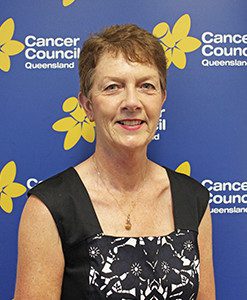By Cancer Council Queensland CEO Chris McMillan
If you have a cervix – this is for you!
At the end of last year, the two-yearly pap test was replaced with a new cer

vical screening program. The new program will screen women aged 25-74 every five years, with evidence showing the renewed program is far more effective and just as safe.
Research shows the new test will reduce cervical cancer incidence and death rates – but we know that change can sometimes be confronting, leaving many people wondering just how the changes will affect them personally.
Today, we’ve answered some of the most common questions to help you sort fact from fiction.
Why was a new screening program introduced?
New evidence about cervical screening found that using the cervical screening test every five years is more effective than, and just as safe as, screening with a pap smear every two years.
The new test will detect changes one step earlier than the former Pap test. While this looked for cell changes in the cervix, the new test looks for the presence of the Human Papillomavirus Virus (HPV) which can lead to cell changes in the cervix.
This is a simple procedure and only takes around two minutes. If you have ever had a Pap test before, the way the new test is done will feel the same.
As HPV normally takes 10 or more years to develop into cervical cancer, it is safe to wait five years between tests if HPV is not detected.
Who needs to be screened?
If you’re a woman aged between 25 and 74 years old, have a cervix and have ever been sexually active – you should take part in the new program – even if you have received the HPV vaccine.
Cervical cancer is one of the most preventable cancers so it’s vital to take part every five years, despite being immunised.
For women under 25, you can breathe easy until your 25th birthday. Evidence shows that screening is much less effective in women under the age of 25, and has not resulted in a reduction of cervical cancer rates.
However, if you do experience symptoms such as unusual bleeding, discharge or pain, see a health care professional immediately, regardless of when you were last screened, or your age.
How long after my last pap test do I start the new program?
If your last pap test was negative, and you have not had a previous abnormality, you will be due for your first Cervical Screening Test two years after the last Pap test.
If you have had an abnormal result previously and your GP recommended that you return earlier than two years – make sure you go back at that recommended time. If your first test in the new program shows that HPV is not detected, you will then re-screen five years later.
Where can I access more information?
Cancer Council has developed an easy and interactive website for women who want to find out more information: www.cancer.org.au/cervicalscreening.
Only about half of all eligible women in Queensland currently take part in the National Cervical Screening Program – we hope this change will encourage more eligible women to take the test, giving themselves the best possible chance of detecting cancer early.
If you still have questions about the Cervical Screening Program call Cancer Council on 13 11 20 or speak with your GP.
Around 200 women in Queensland are diagnosed with cervical cancer each year, and about 60 die from the disease.
For more information or interviews, please contact:

